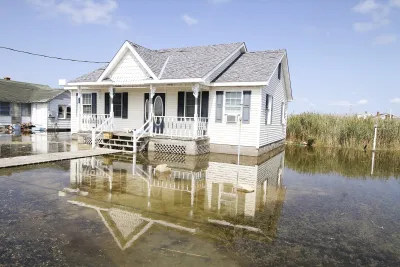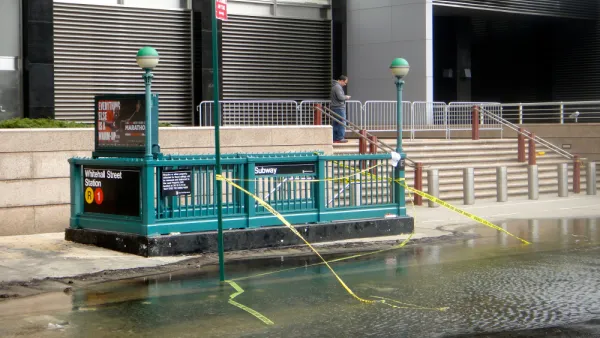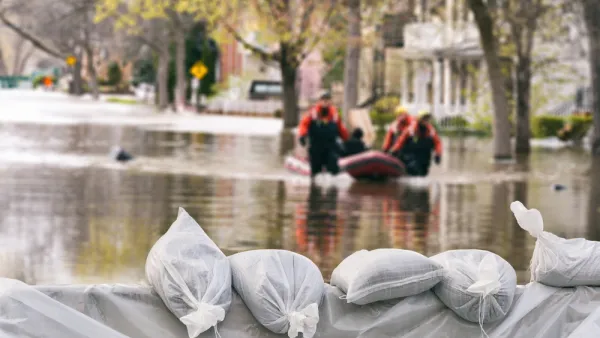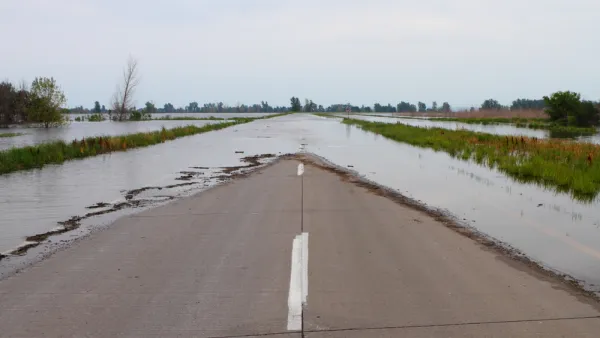As climate-driven flooding and storms put increasing pressure on coastal communities, some say the piecemeal nature of federal recovery and mitigation efforts aren’t cutting it.

Coastal communities are increasingly threatened by sea level rise and severe weather events. As a growing number of residents face the decision to stay or go, experts are calling for a more comprehensive, coordinated response to recovery, resilience, and buyouts.
“[M]any hundreds of communities in the US could soon be facing the same heart-wrenching choice. Even under optimistic scenarios, scientists predict that by 2100 some 4.2 million Americans across 500 coastal communities will experience ‘disruptive inundation,’” Timothy Shuler reports a reporter for Next City. That’s the case for residents in Oyster, Virginia, where sea level has risen by a foot and a half.
The financial strain of flood damage—expected to jump by 30 percent by 2050 from $9.4 billion today to $12.8 billion for federally backed mortgages, according to the Congressional Budget office—combined with patchy federal preparedness and response programs that often disproportionately disadvantage low-income and BIPOC communities, have led some experts to ask if a entirely new federal entity is necessary. Some are proposing “a department that could plan and coordinate the challenging process of relocation and adaptation known as managed retreat.”
Creating a single agency would avoid the siloed and conflicting responses after major disasters, such as after Hurricane Matthew in 2016, when the Federal Emergency Management Agency began funding floodplain buyouts in Princeville, North Carolina at the same time the US Army Corps of Engineers was spending hundreds of thousands of dollars on a plan to better protect the town and the state was pushing community-wide relocation.
“There’s no thread that connects the investment [of a buyout] to something that is actually meaningful. There’s nothing that follows the dot all the way through,” Kate Orff, faculty director of Columbia University’s Center for Resilient Cities and Landscapes told CityLab. She said what’s needed “is a program that actually looks more synthetically at how all of these things come together.”
FULL STORY: Who Will Manage the US Climate Retreat?

National Parks Layoffs Will Cause Communities to Lose Billions
Thousands of essential park workers were laid off this week, just before the busy spring break season.

Retro-silient?: America’s First “Eco-burb,” The Woodlands Turns 50
A master-planned community north of Houston offers lessons on green infrastructure and resilient design, but falls short of its founder’s lofty affordability and walkability goals.

Delivering for America Plan Will Downgrade Mail Service in at Least 49.5 Percent of Zip Codes
Republican and Democrat lawmakers criticize the plan for its disproportionate negative impact on rural communities.

Test News Post 1
This is a summary

Test News Headline 46
Test for the image on the front page.

Balancing Bombs and Butterflies: How the National Guard Protects a Rare Species
The National Guard at Fort Indiantown Gap uses GIS technology and land management strategies to balance military training with conservation efforts, ensuring the survival of the rare eastern regal fritillary butterfly.
Urban Design for Planners 1: Software Tools
This six-course series explores essential urban design concepts using open source software and equips planners with the tools they need to participate fully in the urban design process.
Planning for Universal Design
Learn the tools for implementing Universal Design in planning regulations.
EMC Planning Group, Inc.
Planetizen
Planetizen
Mpact (formerly Rail~Volution)
Great Falls Development Authority, Inc.
HUDs Office of Policy Development and Research
NYU Wagner Graduate School of Public Service





























